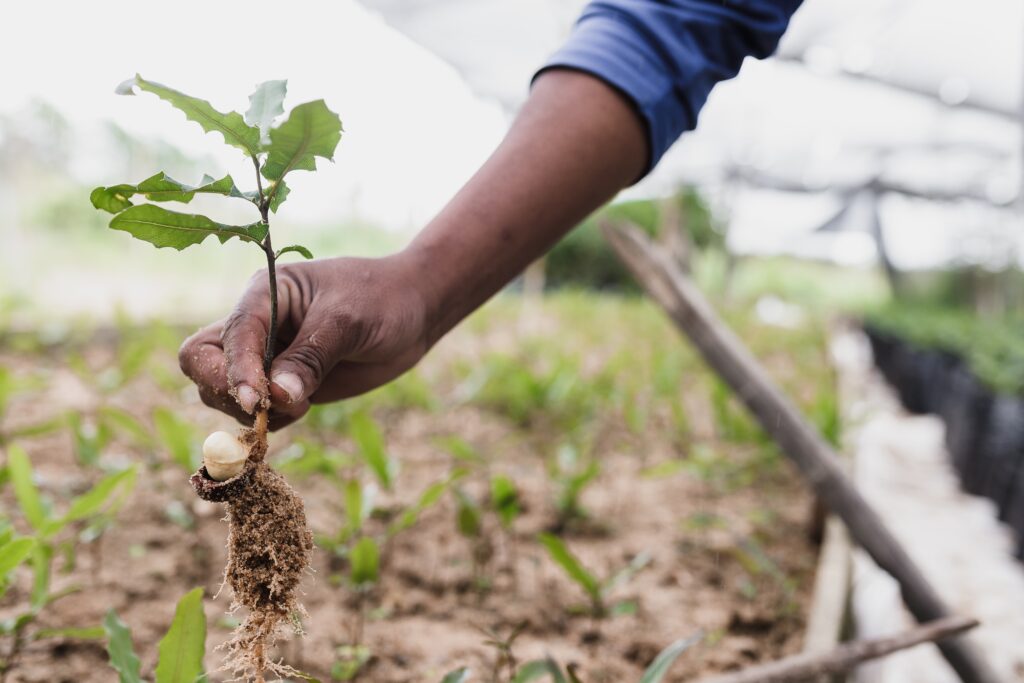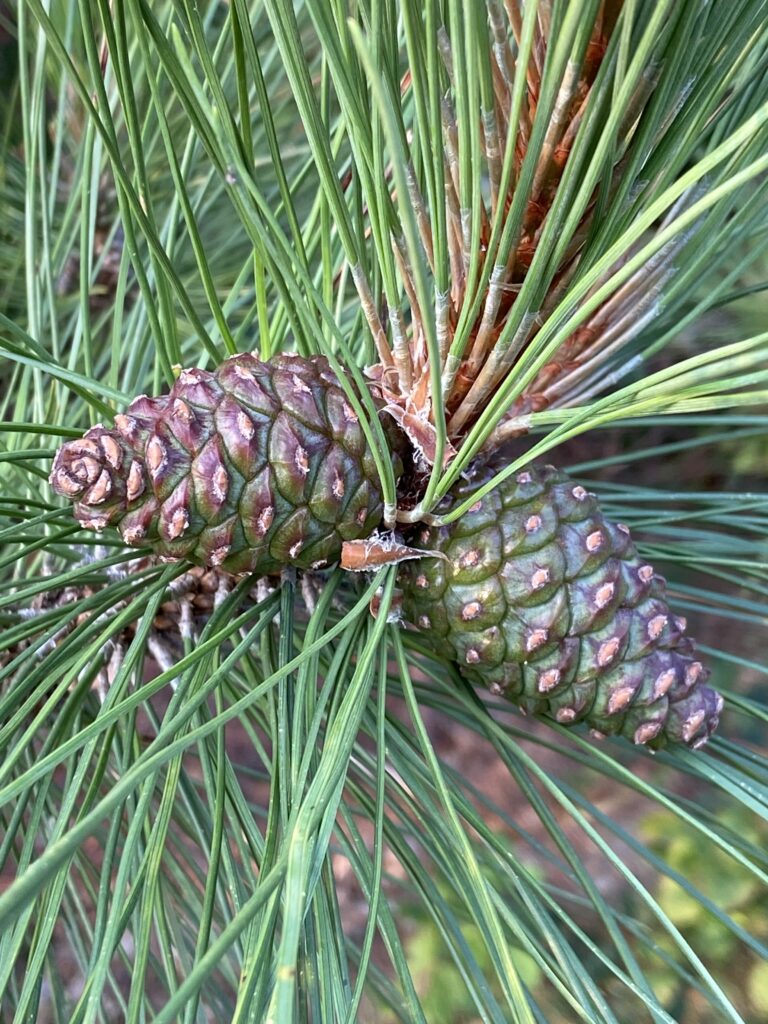
Greening Wisconsin: A Call to Landowners for Spring Seedling Orders
By Denise Thornton
Now is a great time for Wisconsin land owners to order tree and shrub seedlings that will be shipped in the spring from the Wisconsin Department of Natural Resources (WDNR) Reforestation program . You simply check the inventory of tree and shrub seedlings available here. Then you can order online or print out a paper order form here. For the best selection, it is a good idea to order trees as soon as you can.

Last year 3.8 million trees were sold. The WDNR has provided 1.6 billion trees to state residents since starting in 1911, when E. M. Griffith, Wisconsin’s first state forester, began the original state nursery in Trout Lake. Some of the first trees planted at the site back then are still going strong.
The program has expanded, and now Wisconsin has three nurseries: the Hayward Nursery in Hayward, the Griffith Nursery in Wisconsin Rapids, and, most recently, the Wilson Nursery in Boscobel, started in 1951, according to Jeremiah Auer, WDNR Regeneration Specialist. Only the nursery in Boscobel is actively producing seedlings now. The Hayward Nursery is used for seed orchards, and seed collection, processing, and storage. The Griffith Nursery has an educational focus.
“We start taking orders for the following spring on the first Monday of each October,” says Auer. “We take inventory in late August and early September and update the stock descriptions on our web page.”
“We try to have at least 10 percent more stock available than the projected need, and we don’t sell out of everything —but you never know,” Auer continues. “ One year someone wrote an article in a deer hunting magazine that said basswood was the favored tree for deer to rub their antlers on, and people went nuts for basswood. We may run out of some trees, but we almost always have something people can order. If we don’t have what you want, call your local forester and try to match other species with your soils.There are private nurseries with plenty of seedlings to offer as well. We will be taking orders all the way into May.”
Between ordering and receiving your trees, there is a lot of decision making, and work behind the scenes. Right now the nurseries are gathering, processing, and planting seed. Most of that seed is collected by and purchased from Wisconsin citizens. “The seed is pouring in right now,” says Auer. “We know what we need to plant because we ask foresters for their county seedling projections and use our own experience. Any excess seed is stored at the Hayward Nursery. “The seed collecting community is small but active, and they really work hard to get our seed,” Auer says. “The people who pick for us already hunt, fish, pick berries and mushrooms. They observe the tree seeds throughout the year and know how to collect them.”
Some seeds are harder to collect than others, and that is reflected in the price for each variety. “We have not had a good red pine year for 15 years, and it is a challenge to pick enough red pine cones. We have been increasing the price for the last few years, but it hasn’t been moving the needle. This year we are paying $125 per bushel.” When the nursery receives red pine cones, it takes about four hours to open the cones in a seed extraction kiln (built in Hayward in the 1930s) and shake out the seed. Then it must be cleaned and processed. A bushel of red pine cones can yield as little as a quarter pound of seed. “We spend $375 to get less than a pound of seed to plant, and that doesn’t include our prep time, but there are about 50,000 red pine seeds in a pound, and we sell close to a million red pine seedlings every year.”

The state nurseries operate under a state statute, and are required to operate like any other business and have to cover all costs from selling the seedlings. “We have nine permanent employees and at least 12 limited term employees, and in the spring we hire contractors to help.. “They are fantastic – hard workers. We couldn’t do it without them.”
Like other farmed crops, tree nurseries must contend with insects, fungal diseases, flooding and drought. “We take special care to minimize fungal disease,” Auer says. “And we worry about leaf hoppers and other insects that follow the weather patterns. We can get aphids blown in from the south eastern US every year.”
Trees are planted at different times of year. For example, there are three million birch seeds per pound. They are so light that if planted in the fall, the winter winds will blow much of it away, so they are planted in the spring, but all the heavy seeds like acorns, hickory, walnuts, and maple are planted in the fall.
Some species take two years to germinate, like American highbush cranberry, gray dogwood, hawthorn, basswood and winterberry. “They are a challenge to grow,” Auer says, “but wildlife love them and so do people — so we grow them.” Jack pine grow very quickly. Others like red pine and white spruce need two years to have a seedling big enough to replant. Balsam fir, hemlock and a few of the other conifers take three years to grow.

When it’s time to harvest seedlings for delivery in the spring, a commercial digger pulled behind a tractor lifts the seedlings up. They go onto a vibrating grid and are set back on the found for workers following behind to put them in bins and take them to nursery coolers where they are sorted and stored. Then they are shipped in refrigerated trucks to pick-up points in each county. By the first week in May, all the trees will be shipped.
The WDNR offers a guide to planting tree seedlings at its website. Auer offers a few more tips based on his years of experience.
1. Heat and dryness are the enemy of tree seedlings. Keep them cool and moist. A week is a long time for seedlings to go unrefrigerated. As spring progresses, it can get much harder on seedlings to plant them successfully when they are no longer dormant and actively trying to grow.
2. Always protect the roots. Don’t store them in the sun or let them dry out when you are preparing to plant.
3. Plant them in a hole large enough that the roots can spread out, while keeping the root collar at soil level.
Auer suggests talking to a professional forester about spacing the seedlings according to your plan for the trees. “If you are growing for cords and boards, plant 6 feet apart with 8 feet between the rows. That fits the harvesting equipment. However for good wildlife trees, with oak for instance, plant trees at least 8 to 10 feet apart so the branches have as much light as possible for big crowns and more acorn production. If it’s a hedge or shelter belt you want, plant three rows and stagger them so there is 8 foot spacing in every direction.”
By Denise Thornton
